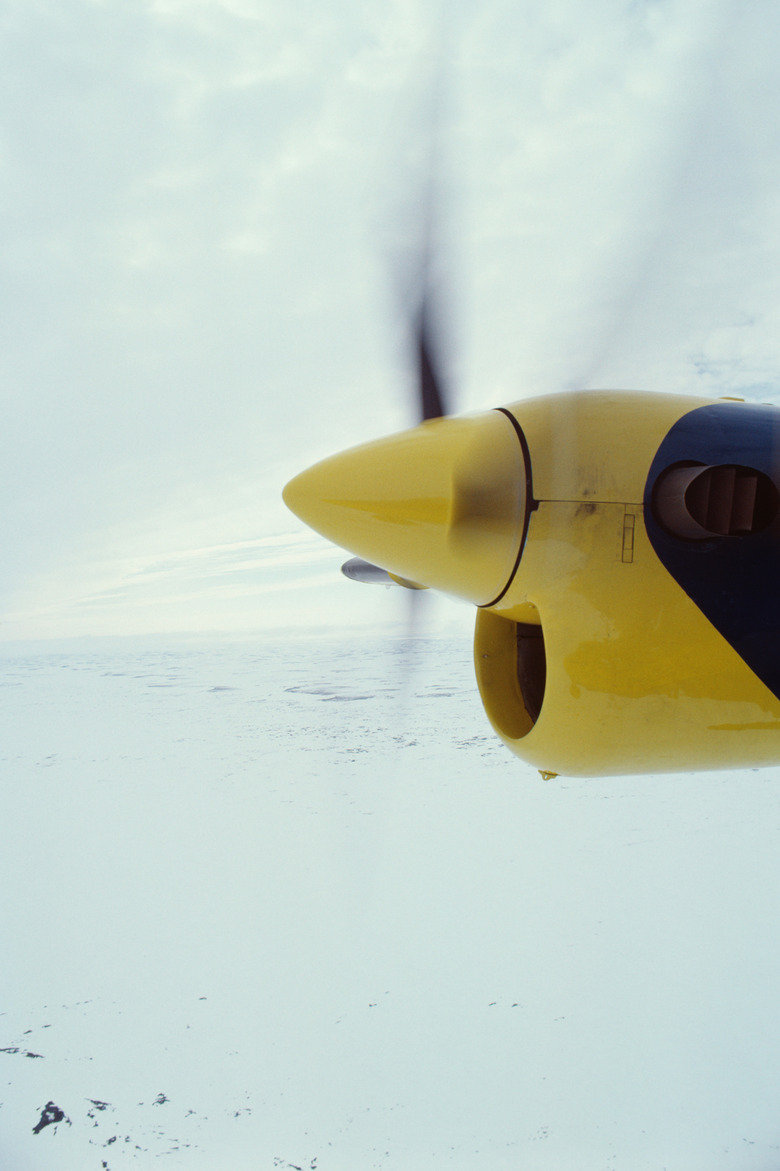What Is A Trunnion Bearing?
Trunnion bearings are very specialized bearing mechanisms. Sometimes, a shaft not only has to rotate, but the assembly connected to the shaft has to rotate as well. Other times, the shaft has to be free to move around in circular motions. Your shoulder joint is a trunnion bearing. Its a a ball-and-socket assembly, allowing your arm to rotate freely but still be firmly attached. Engineers look at the requirements of the movement requirements, and they design trunnion bearings to accomplish the task.
Coordinate Placement
Coordinate Placement
To visualize where a trunnion bearing is placed, draw a large "plus" (+) sign on a piece of paper. Label the horizontal line "X," and the vertical line "Y." Where the lines intersect, visualize a line coming straight up from the paper. This is the "Z" axis. Where all three lines meet is where the trunnion bearing is placed. A shaft, or a series of shafts, pass through the trunnion bearing. Trunnion bearings are usually not just one piece, but rather an entire assembly that holds the shafts firms, but yet allow the shafts to spin or swing freely.
Trunnion Bearing Designs
Trunnion Bearing Designs
First, an engineer looks at the shaft movement requirements. These shafts may have to spin, but also they may have to swing from side to side or up and down through the X -Y – Z coordinate space. Trunnion bearings may have to support multiple shafts, each having its own unique movements. Designing a trunnion bearing assembly is not easy. Engineers rely on computer aided design (CAD) programs to assist them with the drawings.
Uses
Uses
A common use of a trunnion bearing assembly is a variable pitch propeller. The propeller has to spin, but the angle of the blades has to be changed while the propeller is spinning. The base of each blade has a shaft. The blade shaft interlocks with the trunnion bearing. By a complex series of levers and gears, the blade shaft rotates in the trunnion bearing, while another part of the bearing supports the main spinning shaft. The engineering company Andritz AG, in Graz, Austria, designed such a bearing for marine propellers.
Stress Issues
Stress Issues
Because the shafts swing, sway, and spin all at one centralized point, a lot of stress goes on the trunnion bearing. In a propeller trunnion bearing, the entire pull of the prop is on the main shaft. While the propeller is spinning and pulling, centrifugal force tries to rip the blades away from the hub. In a piece of farm equipment, the spinning shaft turns a tiller blade, but the entire blade carrier has to swing up and down to account for various terrains. Engineers factor in the stress levels when designing a trunnion bearing, so it doesn't break apart during usage.
Cite This Article
MLA
Oldhand, Tony. "What Is A Trunnion Bearing?" sciencing.com, https://www.sciencing.com/what-is-a-trunnion-bearing-12750415/. 14 July 2011.
APA
Oldhand, Tony. (2011, July 14). What Is A Trunnion Bearing?. sciencing.com. Retrieved from https://www.sciencing.com/what-is-a-trunnion-bearing-12750415/
Chicago
Oldhand, Tony. What Is A Trunnion Bearing? last modified March 24, 2022. https://www.sciencing.com/what-is-a-trunnion-bearing-12750415/
